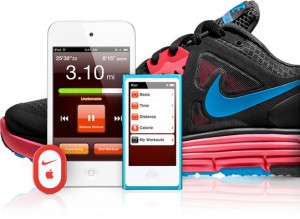Experiential marketing is exactly what it sounds like. And yet it is so much more than anything consumers and marketers have been able to grasp yet. But some are getting close. Indeed, experiential marketing and advertising is creating a new level of consumer interaction that goes beyond selling products to consumers, but guides them along a path that is intelligent, intuitive and, well, the next step in the evolution of marketing sales.
Read this brief selection out of Darrell Rigby’s groundbreaking Harvard Business Review article, The Future of Shopping to get a better idea of what I’m talking about…
“It’s a snowy Saturday in Chicago, but Amy, age 28, needs resort wear for a Caribbean vacation. Five years ago, in 2011, she would have headed straight for the mall. Today she starts shopping from her couch by launching a videoconference with her personal concierge at Danella, the retailer where she bought two outfits the previous month. The concierge recommends several items, superimposing photos of them onto Amy’s avatar. Amy rejects a couple of items immediately, toggles to another browser tab to research customer reviews and prices, finds better deals on several items at another retailer, and orders them. She buys one item from Danella online and then drives to the Danella store near her for the in-stock items she wants to try on. As Amy enters Danella, a sales associate greets her by name and walks her to a dressing room stocked with her online selections—plus some matching shoes and a cocktail dress. She likes the shoes, so she scans the bar code into her smartphone and finds the same pair for $30 less at another store. The sales associate quickly offers to match the price, and encourages Amy to try on the dress. It is daring and expensive, so Amy sends a video to three stylish friends, asking for their opinion. The responses come quickly: three thumbs down. She collects the items she wants, scans an internet site for coupons (saving an additional $73), and checks out with her smartphone. As she heads for the door, a life-size screen recognizes her and shows a special offer on an irresistible summer-weight top. Amy checks her budget online, smiles, and uses her phone to scan the customized Quick Response code on the screen. The item will be shipped to her home overnight.”
Decades ago, these ideas would have seemed to come from some futuristic novel or movie, but now they seem all too real. Consumers can receive mobile alerts from their favorite brands when an item they might enjoy goes on sale. If it’s close to lunch time, consumers might receive a text message when wander within a 100 foot proximity of a restaurant they like inside a shopping mall or casino. With modern technology like smart phones, tablets, interactive maps and more, experiential marketing almost seems like a natural step. But it actually began in the 90s, and has taken off ever since. Unfortunately, however, few companies have taken advantage of modern technology to develop experiential marketing and advertising to the full extent that they can.
Let’s take a step back and ask an important question: What exactly is experiential marketing? According to Tyler Lacoma of Demand Media in his article What Is Experiential Advertising, it “uses modern forms of communication and interactivity to approach marketing from a different, more personal angle. It combines salesmanship with the ability to connect with consumers and give them something to encounter and interact with, rather than just see or listen to.” With such a broad definition, experiential marketing could include a wide array of advertising tactics. Indeed, when a consumer buys something from Amazon.com and they begin to receive recommendations of other similar items that they might like, would that fall under experiential? Most likely, yes. Amazon is interacting with their consumer using prior behavior to help them find something else that they might like, while also garnering increased revenue for their company.

That said, what is it that experiential marketing brings to the table that traditional and even newer forms don’t, beyond Amazon’s consumer history product matching? It is the deeper level of interaction that consumers don’t just prefer, but crave. With the invention of the loudest communication tool in the history of the world, social media, consumers desire to connect on a deeper level with brands than ever before. They don’t just want to buy the latest pair of Nike shoes, they want to post pictures of them to show their friends. They want their Nike+ mobile application, which comes free with their shoes, to show all of their peers how they are using their latest pair of Nikes to set a new personal record at their next 5K. And they want it all to be intelligently streamlined and easy to use while offering exciting and cutting-edge interactive capabilities. It’s about developing not just buyers, but followers. No problem, right?
Well, yes and no. The problem is that developing these experiential campaigns isn’t cheap, and the companies that have the budget for them don’t necessarily have the inclination. If traditional advertising has worked in the past for these successful organizations, then why do they need to spend all that time and money when their standard mix of television, radio and print are working just fine? Hell, they spent close to a million dollars to develop a cutting-edge website, what more do consumers want? Of course, that isn’t always the case. Many forward thinking companies like Nike, Amazon and Apple understand the shifting landscape of modern marketing. But even the ones that have made the leap into this new era of advertising aren’t finding it all fun and games.
While experiential marketing seems to have a great deal of promise for a new era of consumerism and interactivity, there are (as always) going to be some downsides. These intelligent systems, like the ones described in The Future of Shopping are sure to lead to some Big Brother-esque fear of intrusion. Just how much is too much in terms of what a company knows about you? Or, how much communication is too much? Sure, the intelligent offerings created for our fictional character Amy were a blessing for her, as she clearly enjoys shopping and had a need for a product ASAP. But what about the millions of other consumers who give a bit of personal information at the register or online in order to get the initial 10% discount, but don’t want to be pestered every day about a new pair of shoes that just went on sale?
As the term “experiential marketing” indicates, those who are participating are creating a unique brand experience. It makes the buying process easier, more intuitive and more fun for their consumers. But like any new paradigm, there will certainly be kinks to work out. Not everyone who buys a pair of Nike shoes wants to be part of that community. Maybe they just want to go for a jog in peace. So there will be trial and error, of course. The right experience needs to match the right brand, and perhaps even more importantly, the right consumer. The last thing we can do is assume that everyone wants to join the cult of your company. Many will. Others won’t. And that’s okay. But either way, this is a very exciting new level of marketing that we should all be considering in our next campaign.
About the Author
Stuart Haack is an advertising copywriter for Caesars Entertainment and Master of Science Communication Management Candidate at University of Southern California. He loves topics including modern advertising, management strategy, corporate social responsibility and strategic communications. He currently lives in Las Vegas, Nevada with his wife and two dogs and is always open for further discussion via LinkedIn, Twitter or shaack@usc.edu.


4 Responses to The Rise of Experiential: Marketing’s Next Evolutionary Step